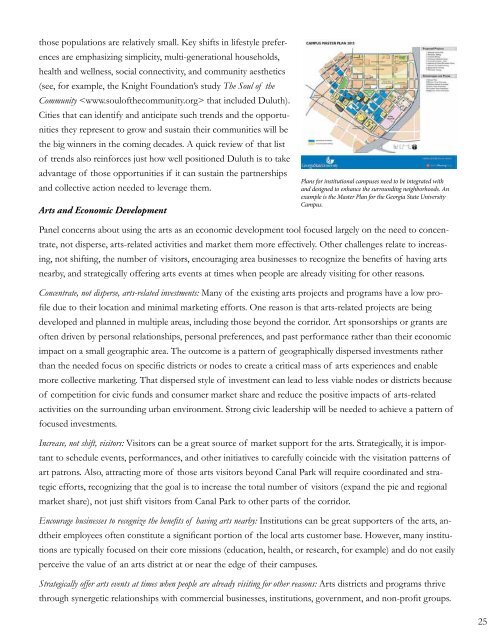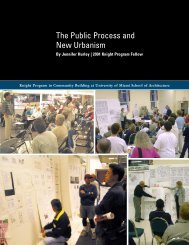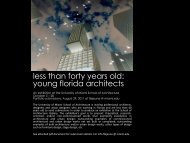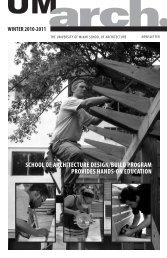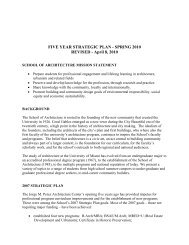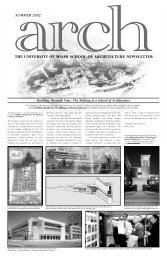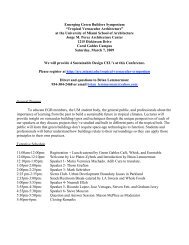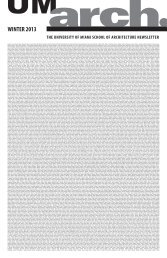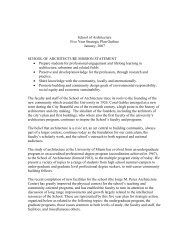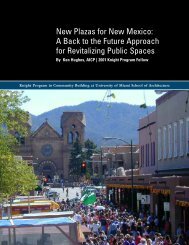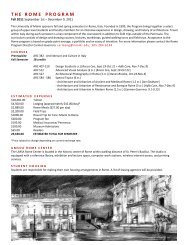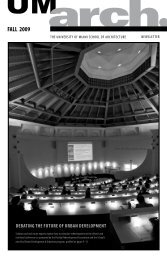Final Progress Advisory Panel Report - Knight Program in ...
Final Progress Advisory Panel Report - Knight Program in ...
Final Progress Advisory Panel Report - Knight Program in ...
Create successful ePaper yourself
Turn your PDF publications into a flip-book with our unique Google optimized e-Paper software.
those populations are relatively small. Key shifts <strong>in</strong> lifestyle preferences<br />
are emphasiz<strong>in</strong>g simplicity, multi-generational households,<br />
health and wellness, social connectivity, and community aesthetics<br />
(see, for example, the <strong>Knight</strong> Foundation’s study The Soul of the<br />
Community that <strong>in</strong>cluded Duluth).<br />
Cities that can identify and anticipate such trends and the opportunities<br />
they represent to grow and susta<strong>in</strong> their communities will be<br />
the big w<strong>in</strong>ners <strong>in</strong> the com<strong>in</strong>g decades. A quick review of that list<br />
of trends also re<strong>in</strong>forces just how well positioned Duluth is to take<br />
advantage of those opportunities if it can susta<strong>in</strong> the partnerships<br />
and collective action needed to leverage them.<br />
Arts and Economic Development<br />
Plans for <strong>in</strong>stitutional campuses need to be <strong>in</strong>tegrated with<br />
and designed to enhance the surround<strong>in</strong>g neighborhoods. An<br />
example is the Master Plan for the Georgia State University<br />
Campus.<br />
<strong>Panel</strong> concerns about us<strong>in</strong>g the arts as an economic development tool focused largely on the need to concentrate,<br />
not disperse, arts-related activities and market them more effectively. Other challenges relate to <strong>in</strong>creas<strong>in</strong>g,<br />
not shift<strong>in</strong>g, the number of visitors, encourag<strong>in</strong>g area bus<strong>in</strong>esses to recognize the benefits of hav<strong>in</strong>g arts<br />
nearby, and strategically offer<strong>in</strong>g arts events at times when people are already visit<strong>in</strong>g for other reasons.<br />
Concentrate, not disperse, arts-related <strong>in</strong>vestments: Many of the exist<strong>in</strong>g arts projects and programs have a low profile<br />
due to their location and m<strong>in</strong>imal market<strong>in</strong>g efforts. One reason is that arts-related projects are be<strong>in</strong>g<br />
developed and planned <strong>in</strong> multiple areas, <strong>in</strong>clud<strong>in</strong>g those beyond the corridor. Art sponsorships or grants are<br />
often driven by personal relationships, personal preferences, and past performance rather than their economic<br />
impact on a small geographic area. The outcome is a pattern of geographically dispersed <strong>in</strong>vestments rather<br />
than the needed focus on specific districts or nodes to create a critical mass of arts experiences and enable<br />
more collective market<strong>in</strong>g. That dispersed style of <strong>in</strong>vestment can lead to less viable nodes or districts because<br />
of competition for civic funds and consumer market share and reduce the positive impacts of arts-related<br />
activities on the surround<strong>in</strong>g urban environment. Strong civic leadership will be needed to achieve a pattern of<br />
focused <strong>in</strong>vestments.<br />
Increase, not shift, visitors: Visitors can be a great source of market support for the arts. Strategically, it is important<br />
to schedule events, performances, and other <strong>in</strong>itiatives to carefully co<strong>in</strong>cide with the visitation patterns of<br />
art patrons. Also, attract<strong>in</strong>g more of those arts visitors beyond Canal Park will require coord<strong>in</strong>ated and strategic<br />
efforts, recogniz<strong>in</strong>g that the goal is to <strong>in</strong>crease the total number of visitors (expand the pie and regional<br />
market share), not just shift visitors from Canal Park to other parts of the corridor.<br />
Encourage bus<strong>in</strong>esses to recognize the benefits of hav<strong>in</strong>g arts nearby: Institutions can be great supporters of the arts, andtheir<br />
employees often constitute a significant portion of the local arts customer base. However, many <strong>in</strong>stitutions<br />
are typically focused on their core missions (education, health, or research, for example) and do not easily<br />
perceive the value of an arts district at or near the edge of their campuses.<br />
Strategically offer arts events at times when people are already visit<strong>in</strong>g for other reasons: Arts districts and programs thrive<br />
through synergetic relationships with commercial bus<strong>in</strong>esses, <strong>in</strong>stitutions, government, and non-profit groups.<br />
25


